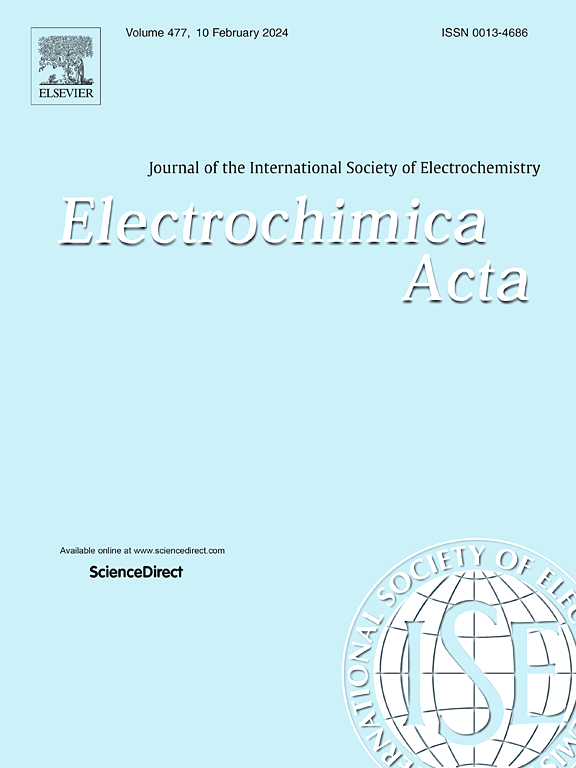Lithium-ion battery separators based on sustainable collagen and chitosan hybrid membranes
IF 5.5
3区 材料科学
Q1 ELECTROCHEMISTRY
引用次数: 0
Abstract
This work focuses on the production of sustainable membranes based on collagen and chitosan as separators in lithium-ion batteries. Membranes were prepared by freeze-drying with varying collagen and chitosan contents. All membranes show interconnected pores with different pore sizes and porosity above 90 %, allowing high values of electrolyte uptake. As for thermal and mechanical characteristics, the addition of chitosan improves both thermal and mechanical stability. After 1 M LiPF6 in EC:DMC electrolyte uptake, the ionic conductivity is above 0.49 mS·cm-1 for all membranes and is most affected by the collagen content. Furthermore, the membranes present a lithium transfer number value of 0.2. In cathodic half-cells with LiFePO4, the obtained room temperature discharge capacity is above 140 mAh·g-1 at C/8 rate. For high C rates (C and 2C rates), the membranes with 80 wt % of collagen and 20 wt % of chitosan present 42 mAh·g-1 after 100 cycles at C rate, demonstrating adequate reversibility. Considering the need for more environmentally friendly materials and methods compatible with a circular economy, the bio-based membranes developed in this work constitute an alternative for synthetic separators.
基于可持续胶原蛋白和壳聚糖复合膜的锂离子电池隔膜
这项工作的重点是生产基于胶原蛋白和壳聚糖作为锂离子电池隔膜的可持续膜。通过冷冻干燥制备不同胶原蛋白和壳聚糖含量的膜。所有膜都显示出不同孔径的相互连接的孔隙,孔隙率在90%以上,允许高电解质摄取值。在热力学特性方面,壳聚糖的加入提高了热稳定性和力学稳定性。在EC:DMC中摄取1 M LiPF6电解质后,各膜的离子电导率均在0.49 mS·cm-1以上,且受胶原含量影响最大。此外,该膜的锂转移数为0.2。在C/8倍率下,LiFePO4阴极半电池的室温放电容量达到140 mAh·g-1以上。对于高C速率(C和2C速率),含有80 wt %胶原和20 wt %壳聚糖的膜在C速率下循环100次后呈现42 mAh·g-1,表现出足够的可逆性。考虑到需要更环保的材料和与循环经济兼容的方法,本工作中开发的生物基膜构成了合成分离器的替代方案。
本文章由计算机程序翻译,如有差异,请以英文原文为准。
求助全文
约1分钟内获得全文
求助全文
来源期刊

Electrochimica Acta
工程技术-电化学
CiteScore
11.30
自引率
6.10%
发文量
1634
审稿时长
41 days
期刊介绍:
Electrochimica Acta is an international journal. It is intended for the publication of both original work and reviews in the field of electrochemistry. Electrochemistry should be interpreted to mean any of the research fields covered by the Divisions of the International Society of Electrochemistry listed below, as well as emerging scientific domains covered by ISE New Topics Committee.
 求助内容:
求助内容: 应助结果提醒方式:
应助结果提醒方式:


